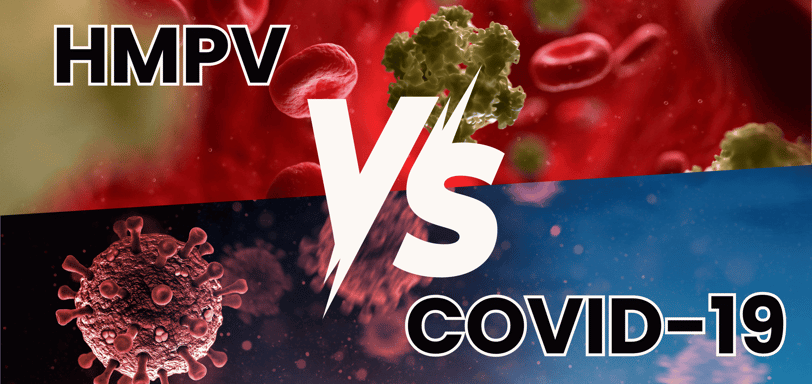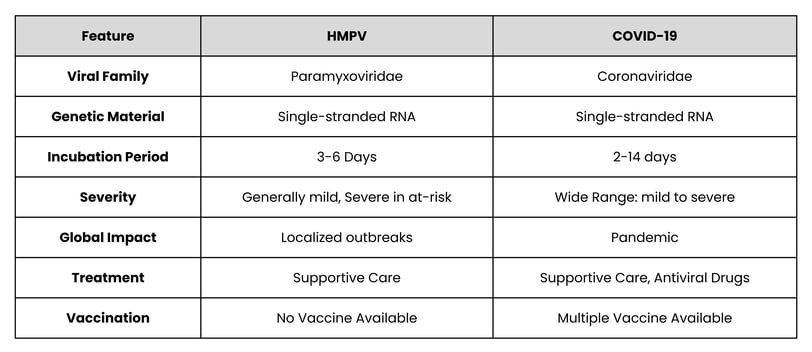HMPV vs. COVID-19: All the Differences and Similarities
In recent years, the spotlight on respiratory viruses has intensified due to their global impact on health. Among the many pathogens, Human Metapneumovirus (HMPV) and the virus responsible for COVID-19, SARS-CoV-2, stand out. Both are significant contributors to respiratory illnesses, but they differ in their origins, clinical manifestations, and societal impact. This article explores their similarities and differences to provide a clear understanding of these two viruses.
1/11/20252 min read


What is HMPV?
Human Metapneumovirus (HMPV) is a paramyxovirus discovered in 2001. It primarily causes respiratory tract infections and is most common in young children, the elderly, and immunocompromised individuals. HMPV infections often present as mild illnesses but can lead to severe conditions like pneumonia or bronchiolitis in high-risk groups.
What is COVID-19?
COVID-19 is caused by SARS-CoV-2, a novel coronavirus first identified in December 2019 in Wuhan, China. It led to a global pandemic due to its high transmissibility and potential for severe outcomes, including multi-organ involvement and significant mortality, particularly in older adults and those with underlying health conditions.
Similarities Between HMPV and COVID-19
Mode of Transmission Both viruses spread primarily through respiratory droplets, close contact, and, to some extent, contaminated surfaces. Proper hygiene and respiratory etiquette are critical in reducing their spread.
Symptoms Both HMPV and COVID-19 can cause a range of respiratory symptoms, including:
Cough
Fever
Shortness of breath
Fatigue
Sore throat Severe cases of both infections can lead to pneumonia.
Risk Groups High-risk groups for severe illness include the elderly, immunocompromised individuals, and those with chronic health conditions.
Seasonality HMPV infections typically peak during late winter and early spring. Similarly, COVID-19 has shown some seasonal trends, though its global spread has been more continuous.
Prevention Measures Preventative measures such as mask-wearing, social distancing, and hand hygiene are effective for both viruses.
Key Differences Between HMPV and COVID-19
Clinical Impact
HMPV: Often underdiagnosed, HMPV primarily affects young children and older adults. It is estimated to cause a significant percentage of respiratory hospitalizations in children under five. However, it has not caused global health crises on the scale of COVID-19.
COVID-19: SARS-CoV-2’s impact has been unparalleled in modern times, with millions of deaths and substantial economic disruption. The virus’s ability to mutate has posed ongoing challenges to public health.
Diagnosis
HMPV: Diagnosed through polymerase chain reaction (PCR) tests, antigen detection, or viral culture.
COVID-19: Widely tested using PCR, rapid antigen tests, and antibody tests.
Conclusion
While both HMPV and COVID-19 are respiratory viruses with overlapping clinical features, their differences in severity, global impact, and preventive strategies set them apart. Awareness of these distinctions is essential for effective management and prevention. As the world continues to grapple with respiratory illnesses, understanding these pathogens is crucial in fostering resilience and preparedness.


